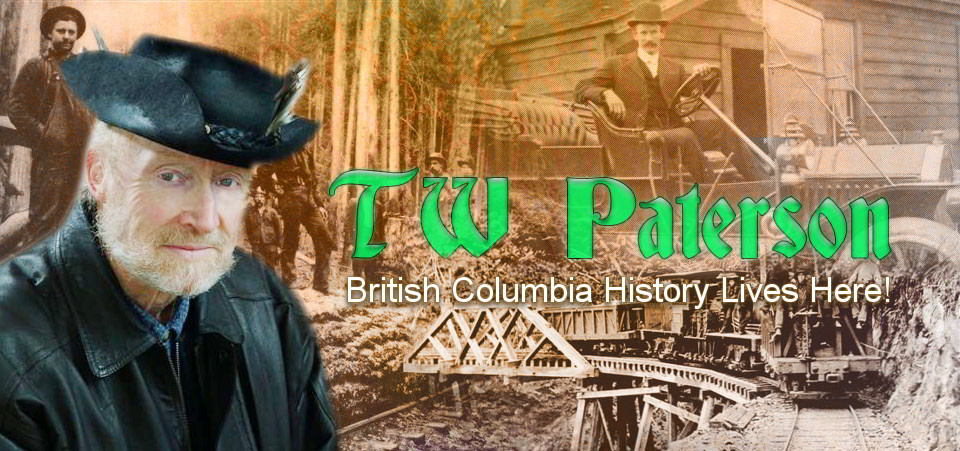Confine Famous Tally-ho Horses to City Parks?
A recommendation by the Victoria SPCA that the famous Tally-ho horses be banned from city streets and confined to parks has generated several letters to the editor and an editorial in the Times-Colonist.
James Bay and the Legislative Precinct just wouldn’t be the same without them!
For a century, these magnifcent draught horses have plodded through heavy automotive traffic at the height of tourist season with few untoward incidents.
They’re as integral to Victoria’s ambience as the Empress Hotel and the Parliament Buildings.
And they’re in prime physical condition, well cared-for and trained to their task which gives them a useful life. How many tourists have had their photos taken with them over the past century is anybody’s guess, but it has to be in the 100s of thousands.
Long may they continue to enhance Victoria’s old world charm by navigating city streets.
Return of Oregon tribal artifacts is promising
A news report that London’s British Museum has returned artifacts in its possession for almost 120 years to an Oregon tribe raises hopes that it will do the same with any British Columbia aboriginal art in its possession.
Almost from the beginning of the arrival of Europeans, collectors, private and institutional, acquired, sometimes by dubious methods, priceless works of art for the benefit of distant collectors and museums.
In recent years several European museums have seen fit to relinquish ‘their’ treasures, a move that has been welcomed by provincial tribes who have likely only ever seen their ancestors’ artisanship in photographs.
In the Oregon case, it took decades for the Confederated Tribes of the Grand Ronde to wrest 16 items from London. These include intricate bowls, woven baskets and a hunting cap. With other pieces they were collected by the Rev. W. Summers, an Episcopal minister who bought them from destitute tribe members in the 1870s and sold them to a colleague who later donated them to the British Museum.
Royal Roads University Out to Acquire Hatley Castle
Royal Roads University is out to acquire ownership of the 170-plus acres occupied by its campus which includes the landmark Hatley Castle.
This is the Sam Maclure-designed baronial manse of coal baron James Dunsmuir who, like father like son, mimicked Robert Dunsmuir’s downtown Victoria Craigdarroch Castle.
It occupies one of the finest pieces of waterfront real estate in all of greater Victoria.
Several years ago, I had the lifetime opportunity to wander throughout the castle without supervision. This, at 2 o’clock in the morning!
The castle had been ‘rented’ for the night as part of a ghost tour. What an experience—total freedom, even to go out on the roof!
You know the old expression, if these walls could talk… Well, thanks to historians such as the late Terry Reksten and voluminous newspaper reports over the years, these walls do speak to us.
The elder son of Robert and Joan Dunsmuir, James grew up with the proverbial silver spoon in his mouth and went from working in the mines (in a supervisory, not manual or menial capacity) to being, like his father before him, one of the richest men in the province.
But he did more than just become rich; he became premier of British Columbia and lieutenant-governor before retiring into semi-seclusion behind the forested acres and walls of Hatley Castle, in what was then rural Colwood.
How ironic then that he died in a rustic fishing cabin on the Cowichan River. His is one chapter of the Dunsmuir saga which had more melodrama than many a Hollywood script.
Today, other than some modest recognition by mapmakers and Craigdarroch and Hatley castles, the Dunsmuirs have all but vanished from conscious memory.
Oak Bay’s ‘most important’ heritage house seismically challenged
Another structure built of stone is in the news, this one in Oak Bay, where the owners of a 1909 stone house applied for a demolition permit. It’s supposed to be one of only three like it in the municipality and council was quick to reject the application.
“It is a most important house,” Mayor Nils Jensen told the Times-Colonist. “Some of the experts have even suggested it is the most important house in Oak Bay from a heritage point of view.”
That said, the house isn’t on Oak Bay’s list of heritage buildings. The owners based their bid for demoliton on the fact that the structure only meets 10 per cent of the seismic code. An engineering report suggests that this can be upgraded to as much as 80 per cent and if the owners were to apply for heritage designation they could qualify for grants to assist with upgrades.
Victoria High School: to Save or Demolish?
Speaking of heritage buildings, one of Victoria’s biggest and best known is also in the news and on the firing line.
The Greater Victoria School Board is pondering the fate of the 1914 Victoria High School: whether to tear it down and replace it with a state-of-the-art structure or retain it (or at least the facade) as a heritage building.
This is another case of the lack of seismic upgrading, a particularly sensitive issue when an earthquake could impact catastrophically on its students.
Former students and teachers and the heritage-minded have written numerous letters to the editor in defence of “the oldest high school west of Winnipeg and north of San Francisco”.
As ever, it’s a matter of money. To demolish and build a-new is estimated to cost less than to save even part of the existing building as part of a new complex.
At last report Greater Victoria school trustees were opposed to demolition but the final decision will be made on the provincial level.
News reports of Vic High’s possible destruction prompted the National Trust for Canada to place it on the country’s 2018 Top 10 Endangered Places List.
We’ll have to stay tuned on this one…
